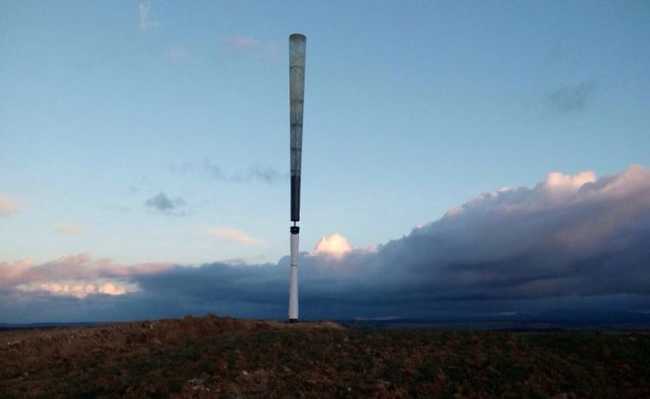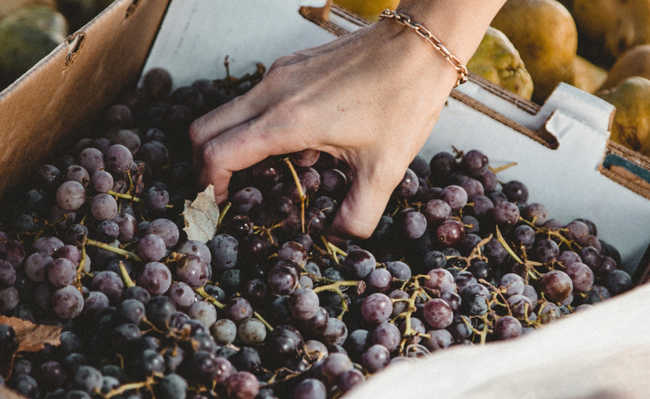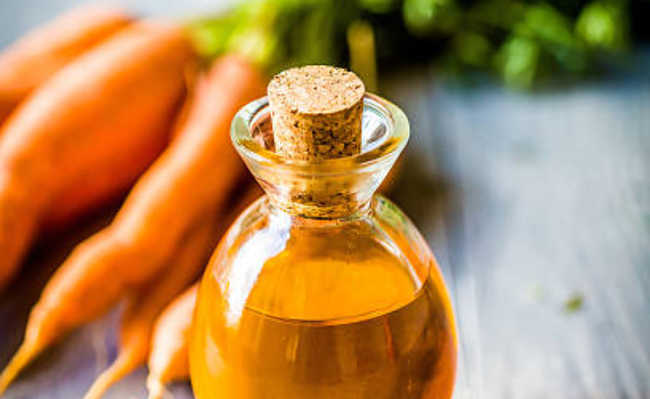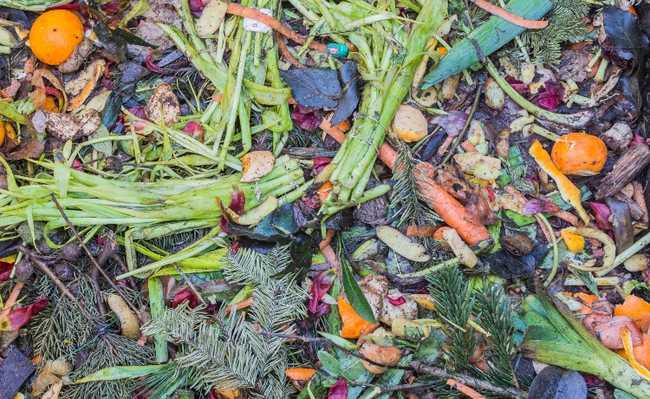Basil tea and other recipes to enjoy benefits
Discover the different types of basil and see how to make your tea

Basil, this herb so used in Brazilian cuisine, enchants many people due to its delicious aroma and flavor. But what not everyone imagines is that the basil , belonging to the family Lamiacea, has a number of health benefits, in addition to various uses in the kitchen... It is very easy to grow and the basil tea is extremely tasty! Learn more about this little plant.
Types of basil
Due to the cross-pollination that occurs with basil, the genetic variability of the plant is greatly facilitated, which makes this vegetable occur in many subspecies, varieties and forms.
Only in relation to the species Ocimum Basilicum there are more than 60 varieties, which makes it very difficult to classify them.
What makes the identification of basil a little easier is its diversity of aromas, which, popularly speaking, allows the different types to be named according to the smell they produce. Examples of this are sweet basil, lemon basil, cinnamate basil (or cinnamon), camphor basil, anise basil and clove basil.
Basil Essential Oils
The active substances in medicinal plants such as basil form two different types, the first type being part of the primary metabolism and the second type being part of the secondary metabolism. The primary metabolism composes substances that are essential for the plant and are formed thanks to the photosynthetic process. The secondary metabolism, originating from the primary, apparently without activity in the plant, has remarkable therapeutic effects for humans. Such effects are generated by substances called active principles or secondary compounds.
Essential oils present in plants attract pollinating agents, act in defense against herbivores, regulate the rate of decomposition of organic matter in the soil and act as antimicrobial agents. Industrially, they can be used as antioxidants or flavoring in foods, among other uses. Essential oils are mainly made up of volatile terpenes. To learn more about this subject, check out the article "What are terpenes?".
Essential oils made from different types of basil have a number of therapeutic properties. To learn more about essential oils, check out the article "What are essential oils?"; and to confer the therapeutic properties of the essential oil of basil.
Benefits of basil and its essential oil
The gender Ocimum it is the European type basil, the most valued on the market. The essential oil of this genus is extracted from the leaves and flowers of basil through hydrodistillation, and its main constituents are linalool (40.5% to 48.2%) and methyl-chavicol (28.9% to 31.6 %). But the chemical composition of the essential oil can be quite variable due to the genetic diversity, habitat and cultural practices of each crop.
In this genus we can find the species of basil Ocimum americanum L., O. basilicum L., O. campechianum, O. gratissimum L. and O. selloi Benth.
This diversity, in quantitative and qualitative terms, reveals all the complexity of the constitution of essential oils, which, by definition, are complex mixtures, and may contain one hundred or more organic compounds, usually volatile and aromatic, which confer a characteristic odor to the plant.
Among the most important species of basil are the Ocimum gratissimum (sweet basil), Ocimum Basilicum (white basil), Ocimum tenuiflorum and Ocimum selloi Benth, which are sources of essential oils for the production of pharmaceuticals, perfumes and cosmetics.
basil basil clove

Ocimum gratissimum, L or, popularly speaking, basil basil-cravo, is a type of basil originating in Asia that also occurs throughout Brazil. The name basil is given to several plants of the same genus, very similar to each other. It can be easily recognized by the strong, pleasant aroma reminiscent of cloves. The flowers are small, pale purple in color, usually arranged in groups of three. The fruits are capsule type, small, having four spherical seeds.
How to plant basil basil cloves
This basil can be propagated from seeds and by means of cuttings, and be planted in the spacing of 0.80 m between rows and 0.40 m between plants. Adapts well to any type of soil. It is a perennial plant, widely cultivated in vegetable gardens, backyards and gardens.
It needs daily irrigation until the flowering period, which occurs around sixty days. The leaves can be harvested in the morning or between 11 am and 1 pm, when the eugenol content is highest.
How to use basil basil cloves
One of the best ways to enjoy the benefits of basil basil cloves is through the essential oil.
Every aerial part of the plant contains essential oil rich in eugenol and eucalyptol, whose concentrations vary throughout the day. The leaves and flowers of the clove basil contain, respectively, 3.6% and 0.02% of essential oil, whose eugenol content reaches in each one 77.3% and 50.17%.
The presence of eugenol gives the plant and its essential oil local antiseptic action against some fungi (Aspergillus and Trichoderma) and bacteria (Staphylococcus). Eucalyptol is an expectorant and a pulmonary disinfectant.
Dried and powdered leaves, flowers, and fruits are excellent seasoning mixes.
basil basil

Ocimum micranthum Wild, L; Chicken basil or basil is a type of annual basil, with an approximate height of 30 cm. The leaves are thin and the flowers are bluish in color.
How to plant basil chicken basil
The chicken basil species adapts well to a subtropical climate and thrives in permeable soils rich in organic matter. To find out how to produce your own organic matter at home, check out the article "Guide: how is composting done?".
To cultivate the basil species of chicken basil it is necessary to use seeds collected from healthy plants. It is recommended to do the definitive planting in the spacing of 0.50 m x 0.50 m, with fertilization of 5 kg/m² of organic matter. Flowering takes about fifty days. Plants are harvested after sixty days, preferably in the morning.
How to use basil basil-de-chicken
Chicken basil is an important source of essential oils, present in leaves, flowers and seeds, widely used by the pharmaceutical industry, as it contains eugenol, methyleugenol, and linalool, also used by the food and perfume industry.
In traditional medicine, basil leaf extract is used to treat respiratory problems, rheumatism, paralysis, epilepsy and mental illnesses, in addition to containing biologically active compounds that are naturally used as an insecticide, nematicide, fungicide or antimicrobial.
Anise-scented basil

Ocimum selloi Benth or, popularly speaking, paregoric elixir (tincture used against intestinal pain and diarrhea), atroveran, basil, basil-scent-of-anis, is a perennial, aromatic, erect, branched basil basil, from 40 cm to 80 cm in height, native of southern Brazil. Its leaves are simple, opposite, membranous, from 4 cm to 7 cm in length, with an aroma similar to that of anise essence. The flowers are small, white in color. The fruits are dark in color and do not separate easily from the seed.
How to plant basil basil
The basil basil multiplies both by seeds and by cuttings, developing well in areas with abundant sun, well-drained land, rich in organic matter. However, it also grows in stony and sandy lands on the coast and in high altitude lands. Does not tolerate strong winds and high humidity. Harvesting should take place between two and three weeks before flowering to fully utilize the plant.
How to use alfalfa basil
The most used parts of basil basil are the leaves and flowers, and its essential oil has cineol, methylchavicol and linalool; flavonoids and triterpenic acids. Its compounds have antimicrobial and analgesic therapeutic properties, and can be used as an infusion (basil tea) for digestive problems and elimination of intestinal gas, and as a tincture, used with water for mouthwashes in cases of canker sores; or as an insect repellent.
Tuscan basil

Ocimum basilicum, L., also known as Tuscan basil, Italian basil and basil, is a vigorous, leafy plant with a well-branched stem. It reaches from 40 cm to 50 cm in height. The leaves are large, light green when the plant is young and medium green when adult. The flowering of this type of basil is late and the harvest can be done at different times of the year. The leaves are very aromatic.
How to plant Tuscan basil
The planting of Tuscan basil can be done in pots or in nurseries throughout the year. In open field, it can be cultivated in the warm period, keeping about 30 cm between each plant. It is necessary to prepare the beds well, turning the earth around 15 cm high. Use 150 g of organic matter for each square meter of bed and mix well. Sow and cover with 0.5 cm of light soil or fine sawdust. The recommended spacing is 30 cm between rows and 30 cm between plants. Irrigate at least once a day, preferably in the early morning or late afternoon.
How to use Tuscan basil
The most used part of this type of basil is the leaves, which are rich in linalool. The best known use is in cooking, to season various types of food, make tomato sauce with basil, pesto and basil sauce, among other recipes; but essential oils are also extracted from it. Tuscan basil is also used to treat chills and reduce fever, congestion and pain. It has bactericidal property and fungicidal action. Basil basil leaves are used to treat itchy skin, insect bites and skin conditions. It controls blood sugar levels, is antispasmodic and analgesic, lowers blood pressure, reduces fever, has a fungicidal action and is anti-inflammatory.
sweet basil

Ocimum basilicum, L; white basil, basil, sweet basil, sweet basil, cowherd's medicine, savory, basil, royal herb, large basil, broadleaf basil or sweet basil is a sub-shrub aromatic, annual, erect, highly branched, from 30 cm to 60 cm in height, widely cultivated throughout most of Brazil. Sweet basil is light green to reddish at the base, has simple leaves, with wavy margins, and prominent veins, oval and light green, with a strong and burning smell, but fresh. The flowers gather in number of six and are small, aromatic and whitish, connected in short terminals.
With planting sweet basil
The propagation of this type of basil is by sowing or cutting branches. It is recommended to cultivate with spacing of 30 cm to 40 cm between plants and 60 cm between rows, in light soils and rich in organic matter, in sunny and well-drained land. Leaves must be harvested shortly before flowering.
How to use sweet basil
Sweet basil leaves are rich in vitamins A and C, in addition to having B vitamins (1, 2, 3) and are a source of minerals (calcium, phosphorus and iron). This type of basil has tannins, flavonoids, saponins and camphor. Its essential oil contains thymol, estragole, methyl-chavicol, linalool, eugenol, cineol and pyrene, substances that give sweet basil therapeutic sweating and diuretic properties.
Sweet basil tea made from its fresh leaves is used in newborn children for home treatment of colic. It is also used in cases of stomach ailments, flu and respiratory problems. The use of this kind of basil can be done in two ways: therapeutic or flavoring, being sold in fresh form, including in fairs and supermarkets. There are purple foliage cultivars for ornamental use. Literature cites such use to ward off insects, especially mosquitoes.
Maria beautiful basil

Ocimum basilicum, L. or maria-bonita is native to southwestern Asia and Central Africa and occurs subspontaneously in Brazil. Depending on where it is grown, this type of basil can be annual or perennial. The maria-bonita comes from the PI 197442 accession, from the germplasm bank North Central Regional PI Station, Iowa State University, In the USA. It is the first improved and registered basil cultivar in Brazil. It has a rounded crown shape, with a pink petal and purple sepal. The maria-bonita basil cultivar has an average leaf length of 6.5 cm and leaf width of 2.8 cm, average crown width of 45.70 cm, average stem diameter of 1.32 cm, average height of 45.50 cm and erect growth habit, which, together, favors its harvesting, both manual and mechanized. It has about 85% moisture in the leaves and flowers and 80% in the stem, with an average flowering cycle of 80 days.
How to plant sweet basil
The propagation of this type of basil is by sowing or cutting branches. It is recommended to plant it in sunny places with a spacing of 40 cm between plants and 60 cm between rows, in light, well-drained soil rich in organic matter. Irrigation should be done as needed. Leaves must be harvested shortly before flowering.
How to use maria basil
The cultivar maria-bonita has a high content and yield of essential oil, in addition to a high content of linalool, in its chemical composition, for cultivation in Northeastern Brazil. It has a content of 4.96% of essential oil, and a yield of 1.18 mL per plant. Its main component is linalool (78.12%).
This species is commercially cultivated to use its green and aromatic leaves, which are used fresh or dried as a flavoring or seasoning. Its essential oil has contraceptive and antigiardial activities.
holy basil

Ocimum tenuiflorum, L; Indian basil or holy basil is a plant native to India that occurs in a tropical climate. It is a small annual shrub, with small leaves, strong and pleasant smell, purple flowers and very small seeds.
How to plant sweet basil
This species of basil adapts well to subtropical climates and grows in permeable soils rich in organic matter. It propagates by seeds and rooting of cuttings. Planting is done at 0.25 m x 0.50 m spacing and fertilization with 5 kg/m² of organic matter. The harvesting of the leaves should be done when the plant starts flowering, preferably in the morning.
How to use sweet basil
The leaves and flowers are the main used parts of the sweet basil. This type of basil has essential oil rich in eugenol in the leaves (79% to 83%) and in the flowers (18%-60%). Among other constituents, it has a high content of ursolic acid, and the presence of flavonoids, steroids, anthocyanins and other triterpenes is also reported. These substances provide the sweet basil with antimicrobial and antioxidant activity. Ethnobotanical data reveal that it has been used by the population of northeastern Brazil since the 17th century, during the colonial period, for ritualistic aromatic baths, and as a tea for the treatment of common gastrointestinal problems and also for special seasoning in foods.
basil risotto recipe
Ingredients
- 1 1/2 cup arboreal rice;
- 1 large chopped onion;
- 2 tablespoons of chopped leeks;
- 2 large, ripe, seedless tomatoes;
- 1 liter of homemade vegetable broth;
- 1/2 lemon juice;
- salt to taste;
- black pepper to taste;
- 1 teaspoon of powdered paprika;
- 2 tablespoons of oil;
- fresh basil leaves at will.
Method of preparation
Set aside a pan, add oil and heat. Add onion, then add the leeks and mix well. Let it cook for a few minutes until golden. Season with salt and add the arboreal rice, stirring constantly. Raise the heat, let it fry. Then add some of the vegetable broth and keep stirring. Add half of the previously chopped tomatoes without seeds and skin.
Continue to stir and add the vegetable broth little by little as the broth dries and the rice sticks together. Season with paprika. Now add the rest of the tomatoes and some basil leaves and continue adding more broth. After 20 minutes or when the rice is tender, add pepper, lemon juice and finish with more basil leaves. Wait two minutes and serve.
basil pesto
Ingredients
- 2 cups of fresh basil
- 1/2 cup of extra virgin olive oil
- 1 clove of garlic
- 1/2 lemon juice
- 3 tablespoons of shelled sunflower seed
- 1/2 teaspoon of salt
Method of preparation
Place all ingredients in a blender and blend until smooth. Then transfer to a glass jar and top up with extra virgin olive oil. Cover tightly and store in refrigerator for 30 minutes. Okay, now you can consume your basil pesto!










